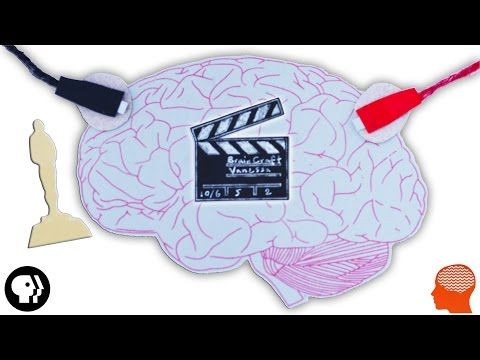How Oscar-Nominated Movies Alter Your State Of Mind: The Science Of 'Neurocinema'

Going to the movies is a shared experience, whether you’re with friends or go stag. Directors create movies to communicate either a social, political, or sometimes humorous message that stimulates the viewer’s mind. The collective reaction heard from the audience in movie theaters all comes down to a science — neurocinema, according to Braincraft’s latest YouTube episode, "How Movies Control Your Brain."
Alfred Hitchcock once said, referring to films, “Creation is based on an exact science of audience reactions.” Scientists have gone as far as analyzing how we watch movies to figure out which styles of filmmaking have maximum control over our brains. This means even the most notable of film critics are vulnerable to the mind-controlling effects of films. Yes, you indeed have less autonomy in your reaction to movies than you think.
A 2004 study published in the journal Science found when participants watched 30 minutes of Sergio Leone’s western film, The Good, The Bad, and the Ugly, there was a similar pattern of activity seen in the functional magnetic resonance imaging (fMRI) scans. The researchers found brain activity was remarkably similar within the audience. In particular, there were scenes that generated both an increase and decrease in certain brain areas, and caused the audiences’ eyes to focus on the same areas of the screen.
In an effort to observe whether this pattern is present throughout various movie and TV genres, researchers measured the brain activity of participants watching an episode of Alfred Hitchcock Presents, Curb Your Enthusiasm, and a real-life 10-minute unedited short of a New York City park in a 2008 study. They found the Hitchcock episode evoked similar brain activity across all viewers in over 65 percent of the cortex — the outer layer of the brain — compared to 45 percent in The Good, The Bad, and the Ugly, 18 percent in Curb Your Enthusiasm, and 18 percent for the unedited short.
This proves the purpose of some movies and TV shows is to control the audience’s reaction more than others. This is all contingent on the director’s style and intentions. However, Vanessa Hill, Braincraft writer and host, says “of course fMRI can’t evaluate the artistic and aesthetic value of a movie.”
Thanks to neurocinema the future of films will be so interactive that they will respond to your brain activity while you’re watching, so they can be the most engaging.
Perhaps the ability to produce the same response in a large audience could be the secret to Oscar-nominated films.
So, what are your Oscar predictions?



























